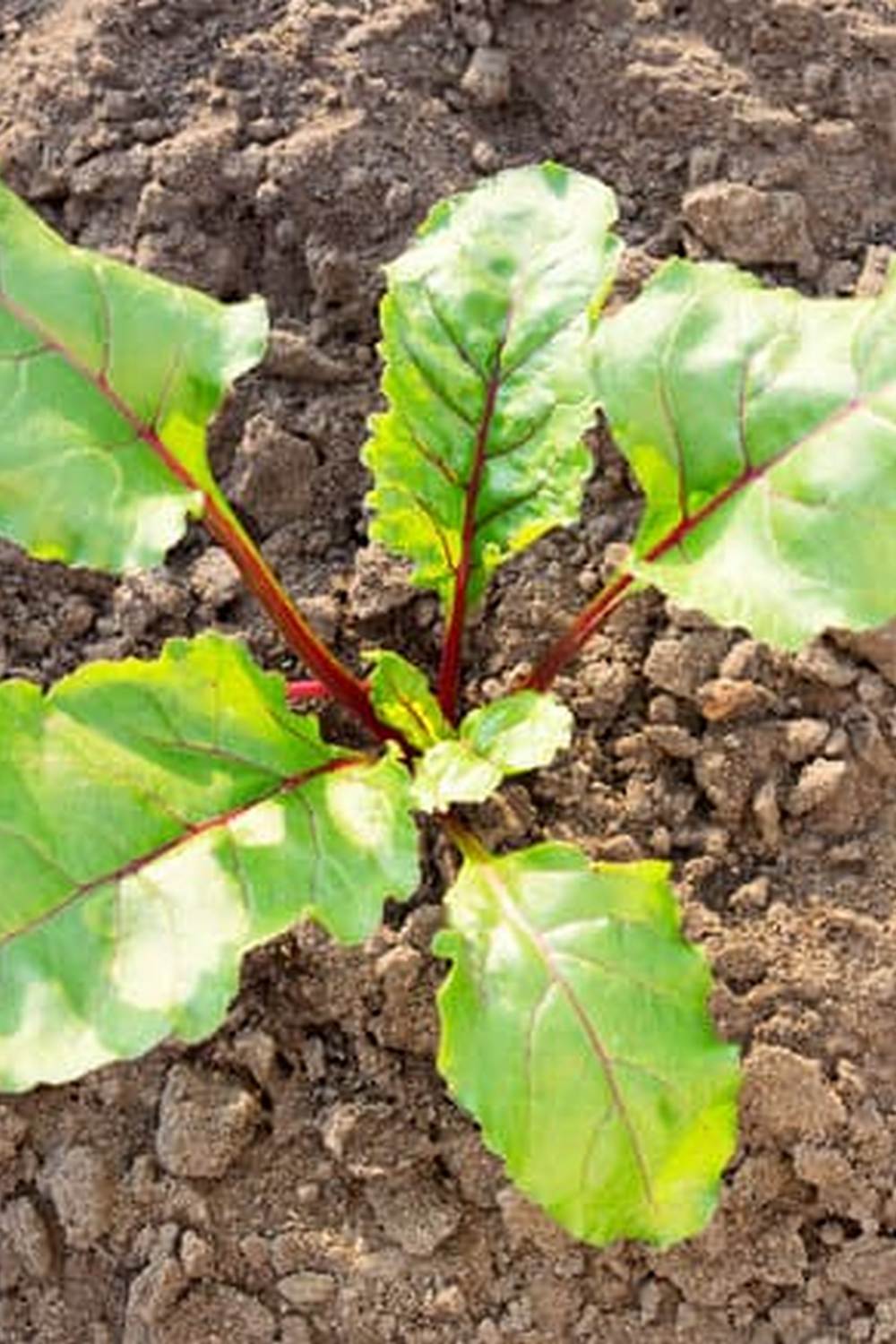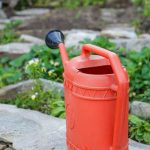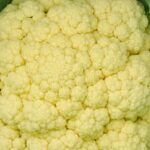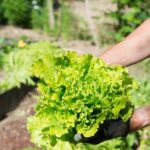Are you looking for innovative ways to enhance the health and productivity of your vegetable garden? Look no further than landscape fiber. This versatile material has been gaining popularity among gardeners for its numerous benefits in promoting soil health and nutrient retention in vegetable gardens.
Landscape fiber, also known as geotextile fabric, is a synthetic material that is designed to improve soil structure and enhance water retention. When used in vegetable gardens, landscape fiber can help prevent soil erosion, suppress weeds, and promote better drainage. In this article, we will explore the many advantages of incorporating landscape fiber into your vegetable gardening practices.
As we delve into the topic of landscape fiber and its impact on vegetable gardens, we will discuss the importance of understanding how this material works and how to choose the right type for your specific gardening needs. Additionally, we will provide valuable tips for proper installation and maintenance, as well as share insights from successful case studies. Join us as we uncover the potential of landscape fiber for sustainable and thriving vegetable gardens.
Understanding Landscape Fiber
Landscape fiber is a versatile material that offers a range of benefits for vegetable gardens. Understanding what landscape fiber is and how it works can help gardeners make informed decisions about incorporating it into their gardening practices.
Landscape fiber, also known as landscape fabric or weed barrier, is a permeable material designed to suppress weed growth while allowing air, water, and nutrients to reach the soil. It is typically made from synthetic materials like polypropylene or polyester, which makes it durable and resistant to degradation from sunlight and moisture.
The primary function of landscape fiber in vegetable gardens is to create a barrier that prevents weeds from taking root, reducing the need for manual weeding and minimizing competition for water and nutrients.
When using landscape fiber in vegetable gardens, it is important to choose the right type of fabric for the specific needs of the garden. Different landscape fibers have varying degrees of permeability, durability, and UV resistance. Additionally, some fabrics are designed specifically for use with certain types of plants or in particular environmental conditions. Selecting the appropriate landscape fiber can significantly impact its effectiveness in maintaining a healthy and productive vegetable garden.
Proper installation and maintenance are crucial for maximizing the benefits of landscape fiber in vegetable gardens. The fabric should be laid down over prepared soil and secured with landscaping staples or other fasteners. Careful attention should be paid to overlapping seams and ensuring that the fabric is properly cut to accommodate plants. Regular inspection and maintenance will also help identify any issues such as tears or shifting that may diminish its effectiveness over time.
| Landscape Fiber Benefits | Impact on Vegetable Gardens |
|---|---|
| Weed suppression | Reduces competition for water and nutrients |
| Air & moisture permeability | Promotes healthy soil conditions |
| Durability & UV resistance | Long-lasting protection against weed growth |
Choosing the Right Landscape Fiber for Your Vegetable Garden
When it comes to choosing the right landscape fiber for your vegetable garden, there are several options to consider. Each type of landscape fiber offers specific features and benefits that can contribute to the health and productivity of your garden. It’s important to take into account factors such as water retention, weed suppression, and overall soil health when making your decision.
Water Retention
One of the key benefits of using landscape fiber in vegetable gardens is its ability to help retain moisture in the soil. This is especially important in drier climates or during periods of drought. When choosing a landscape fiber for your garden, look for options that are designed to absorb and retain water, helping to keep the soil consistently moist and reducing the need for frequent watering.
Weed Suppression
Another factor to consider when choosing landscape fiber for your vegetable garden is its ability to suppress weeds. By creating a barrier between the soil and the surface, landscape fiber can help prevent unwanted plants from taking root and competing with your vegetables for nutrients. Look for products that are specifically designed for weed suppression to keep your garden free from invasive plants.
Soil Health
The impact of landscape fiber on soil health cannot be overstated. The right type of landscape fiber can contribute essential nutrients back into the soil as it breaks down over time, promoting a healthy and fertile environment for your vegetables to thrive. Consider how different types of landscape fiber will affect the overall balance of nutrients in your garden soil and choose accordingly.
With these considerations in mind, you can select the best landscape fiber for your vegetable garden, ensuring that it provides the optimal conditions for healthy growth and abundant harvests.
The Impact of Landscape Fiber on Soil Health and Nutrient Retention
Landscape fiber is a valuable tool for enhancing soil health and improving nutrient retention in vegetable gardens. When properly installed, landscape fiber can play a significant role in maintaining the fertility and structure of the soil, ultimately leading to more robust and productive vegetable plants. Here are some key ways in which landscape fiber contributes to soil health and nutrient retention:
- Preventing Soil Erosion: Landscape fiber helps to combat soil erosion by providing a protective covering over the soil surface. This is especially important in vegetable gardens where frequent watering and cultivation can leave the soil vulnerable to erosion.
- Conserving Moisture: By creating a barrier between the soil and the air, landscape fiber helps to reduce water evaporation, ensuring that the soil remains consistently moist. This not only benefits plant growth but also contributes to efficient nutrient uptake.
- Enhancing Nutrient Retention: Landscape fiber acts as a barrier against nutrient leaching, preventing valuable elements such as nitrogen, phosphorus, and potassium from being washed away by rainfall or irrigation. This ensures that these essential nutrients remain available for plant uptake.
In addition to these benefits, landscape fiber can also improve soil structure by promoting better aeration and drainage. This is particularly advantageous in heavy clay soils, where compaction and poor drainage can inhibit root development and overall plant growth. Overall, incorporating landscape fiber into vegetable gardens can create a more favorable growing environment for plants while reducing the need for excessive fertilization.
When choosing landscape fiber for your vegetable garden, it’s important to consider factors such as material durability, permeability, and weed suppression capabilities. Different types of landscape fiber may offer varying degrees of effectiveness in addressing specific soil health and nutrient retention needs. Proper selection based on these considerations will ensure that you derive maximum benefit from using landscape fiber in your vegetable garden.
Tips for Proper Installation and Maintenance of Landscape Fiber in Vegetable Gardens
Proper installation and maintenance of landscape fiber in vegetable gardens are crucial for ensuring the success of your garden. When it comes to installing landscape fiber, it is important to start with a clean and level surface. Remove any weeds, rocks, or debris from the area before laying down the landscape fiber. This will help prevent any unevenness and ensure proper coverage.
Once the area is prepped, carefully lay the landscape fiber over the soil, ensuring that there are no gaps or overlaps. Secure the edges with stakes or pins to keep the fiber in place. It is also important to consider proper drainage when installing landscape fiber. Make sure that there are adequate drainage channels or perforations in the fiber to prevent waterlogging.
In terms of maintenance, regularly inspect the landscape fiber for any tears, holes, or signs of wear and tear. Replace any damaged sections as needed to maintain its effectiveness. Additionally, monitor the soil moisture levels under the landscape fiber to ensure that it is not becoming too dry or waterlogged. Adjust irrigation accordingly to maintain optimal growing conditions for your vegetable garden.
| Landscape Fiber Installation Tips | Landscape Fiber Maintenance Tips |
|---|---|
| Start with a clean and level surface | Regularly inspect for tears and holes |
| Ensure proper drainage channels | Monitor soil moisture levels |
| Secure edges with stakes or pins | Replace damaged sections as needed |
Case Studies
Benefits of Landscape Fiber
The use of landscape fiber in vegetable gardens has been proven to offer numerous benefits for successful and thriving vegetable gardens. This innovative material not only helps in weed control and moisture retention but also aids in maintaining soil health and nutrient retention. Additionally, landscape fiber can act as a protective barrier against extreme weather conditions, providing a stable environment for plant growth.
Real-Life Success Stories
There have been numerous success stories of vegetable gardens using landscape fiber that showcase the positive impact of this material on crop yield and overall garden health. From community gardens to commercial vegetable farms, the implementation of landscape fiber has resulted in increased productivity, reduced labor costs, and improved soil quality. These case studies serve as evidence of the potential for landscape fiber to transform vegetable gardening practices.
Best Practices and Lessons Learned
By examining these success stories, valuable insights can be gained regarding the best practices and lessons learned when utilizing landscape fiber in vegetable gardens. From proper installation techniques to maintenance tips, these case studies provide practical knowledge that can be applied to various gardening scenarios. Furthermore, they highlight the adaptability of landscape fiber across different climates and growing conditions, further underscoring its potential for sustainable vegetable gardening.
The inclusion of real-life examples underscores the significance of incorporating landscape fiber into vegetable gardens and promotes its continued exploration as an essential component for achieving flourishing and bountiful harvests.
Overcoming Common Challenges When Using Landscape Fiber in Vegetable Gardens
When using landscape fiber in vegetable gardens, there are some common challenges that gardeners may encounter. It’s important to be aware of these challenges and how to overcome them in order to ensure the success of your vegetable garden. Here are some common challenges and tips for overcoming them:
1. Weed Control: One of the main challenges when using landscape fiber in vegetable gardens is weed control. While landscape fiber helps to suppress weed growth, some weeds may still find a way to grow through the fabric. To overcome this, regularly inspect your garden for any weeds poking through the landscape fiber, and promptly remove them by hand or with a tool.
2. Soil Compaction: Another challenge is soil compaction, which can occur underneath the landscape fiber over time. This can hinder root growth and water infiltration. To prevent soil compaction, aerate the soil beneath the landscape fabric using a fork or other gardening tool at regular intervals.
3. Water Management: Proper water management can also be a challenge when using landscape fiber in vegetable gardens. The fabric may hinder water penetration and distribution throughout the soil. To address this, create perforations in the landscape fabric to allow for better water absorption by the soil.
By being aware of these common challenges and implementing strategies to overcome them, you can experience the full benefits of using landscape fiber in your vegetable garden.
The Future of Landscape Fiber in Sustainable Vegetable Gardening
As sustainable and environmentally-friendly gardening practices continue to gain momentum, the future of landscape fiber in vegetable gardens looks promising. Innovations and trends in the use of landscape fiber are constantly emerging, offering new possibilities for improving the efficiency and sustainability of vegetable gardening.
One notable trend is the development of advanced landscape fiber materials that are specifically designed for optimizing soil health and nutrient retention in vegetable gardens. These innovative fibers are engineered to enhance water retention, aeration, and microbial activity in the soil, creating an ideal environment for plant growth. Additionally, biodegradable landscape fibers are being developed to minimize environmental impact while providing long-lasting benefits to vegetable gardens.
Another exciting innovation in the realm of landscape fiber for sustainable vegetable gardening is the integration of smart technology. Some companies are exploring the use of sensor-equipped landscape fiber that can monitor soil moisture levels, temperature, and nutrient content in real-time. This data can then be used to inform precise irrigation schedules and fertilization plans, ultimately maximizing resource efficiency and yields in vegetable gardens.
Furthermore, there is a growing trend towards incorporating recycled and upcycled materials into landscape fiber products for vegetable gardens. By repurposing post-consumer waste such as plastic or paper into durable landscape fibers, gardeners can contribute to waste reduction efforts while creating healthy and productive growing environments for their vegetables. As innovations in sustainable materials continue to unfold, the potential for landscape fiber to revolutionize sustainable vegetable gardening becomes increasingly promising.
Conclusion
In conclusion, the use of landscape fiber in vegetable gardens offers numerous benefits that contribute to the health and success of the garden. By understanding what landscape fiber is and how it works, gardeners can make informed decisions about choosing the right type for their specific needs. The impact of landscape fiber on soil health and nutrient retention cannot be overstated, as it plays a vital role in creating an optimal growing environment for vegetables.
Proper installation and maintenance of landscape fiber are essential for maximizing its effectiveness in vegetable gardens. Case studies have shown that when utilized correctly, landscape fiber can lead to successful and thriving vegetable gardens. It is important to acknowledge that challenges may arise when using landscape fiber, but with careful consideration and problem-solving, these obstacles can be overcome.
Looking ahead, the future of landscape fiber in sustainable vegetable gardening holds much promise. Continued innovations and trends in this area will only serve to enhance the potential of landscape fiber for promoting healthy and productive vegetable gardens. As more gardeners embrace the benefits of landscape fiber, it is clear that this material has a significant role to play in the ongoing success of sustainable vegetable gardening.
Frequently Asked Questions
Is It OK to Use Landscape Fabric in Vegetable Garden?
Using landscape fabric in a vegetable garden can have both pros and cons. While it can help suppress weeds and conserve soil moisture, it can also hinder the natural decomposition of organic matter and affect the soil’s health.
Can Plants Grow Through Landscaping Fabric?
Plants may struggle to grow through landscaping fabric, especially if it is tightly woven or has been covered with mulch. Some plants may still be able to push through, but overall, it can restrict their growth and development.
How Close to Put Landscape Fabric Around Plants?
When using landscape fabric around plants, it’s important to leave an adequate amount of space for them to grow and expand. Placing the fabric too close to the base of plants can constrict their roots and limit their access to water and nutrients from the soil.

If you’re looking to get into vegetable gardening, or are just looking for some tips on how to make your current garden better, then you’ve come to the right place! My name is Ethel and I have been gardening for years. In this blog, I’m going to share with you some of my best tips on how to create a successful vegetable garden.





